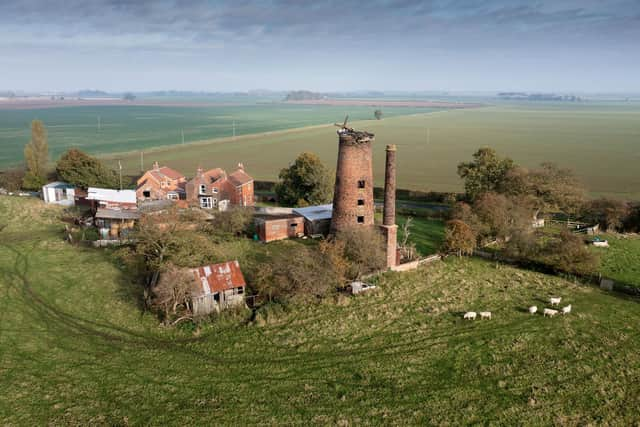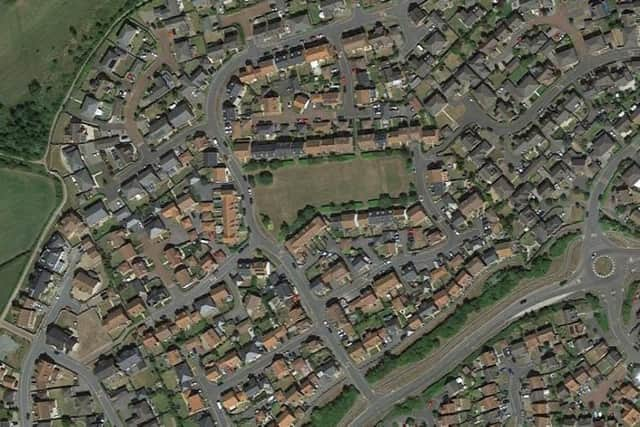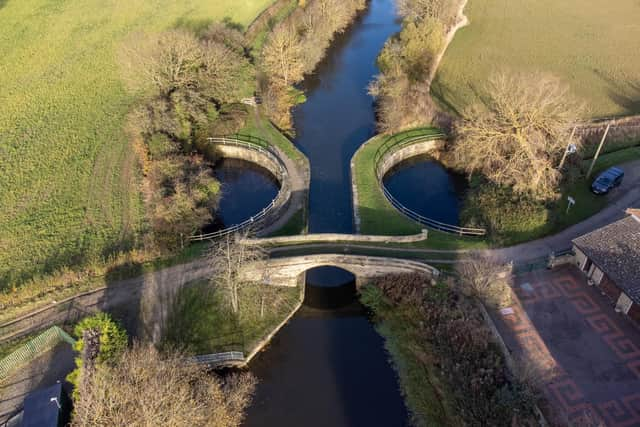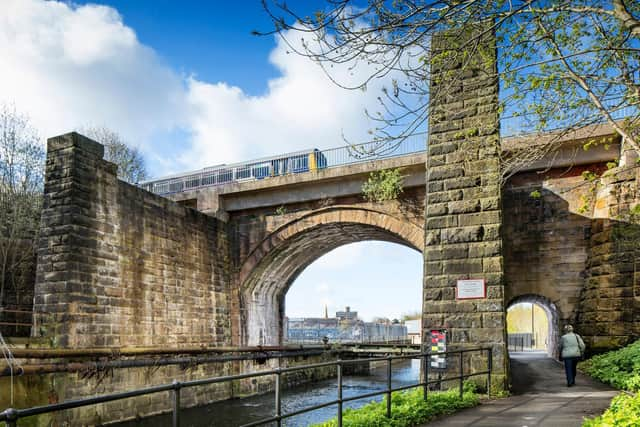Historic England reveal 30 Yorkshire buildings have been listed for the first time - including canal tunnels and a Roman villa
Thirty sites have been added to the list in Yorkshire this year or had their status upgraded- including a Roman villa, a series of canal tunnels, a windmill and a Victorian lamp-post.
Three shipwrecks found in British waters have also been given protected status, though none are off the Yorkshire coast.
Advertisement
Hide AdAdvertisement
Hide AdA listed building cannot be demolished, and any alterations, renovations or changes of use are strictly controlled to ensure no heritage value is lost.


Selby Canal Tunnels - listed at Grade II
Four unusual, cutting-edge tunnels which were designed to stop Selby Canal from flooding have been listed at Grade II. Lund Tunnel, Brayton Tunnel, Paperhouse Tunnel and Tankard's Culvert (West Haddesley) were created in 1778 by eminent engineer William Jessop for the Aire and Calder Navigation Company at an early stage in the development of the canal system.
The tunnels were built as an ingenious engineering solution to alleviate the threat of the Selby Canal being inundated and damaged by flood water.


Selby Canal is six miles long. The low-lying, flat land that surrounds it meant Jessop and his team avoided costly engineering features, but the fact that the area was prone to flooding required Jessop to design five tunnels beneath the canal (the fifth tunnel was in-filled on an unknown date). Although varying in detail, all of the tunnels consisted of a pair of roughly D-shaped collection ponds, or “sumps”, either side of the canal channel, which were linked by a tunnel or tunnels passing beneath the canal.
Advertisement
Hide AdAdvertisement
Hide AdBy 1800, Selby Canal was handling in the region of 369,780 tons of cargo per year. However, its very success was also its undoing as the huge volume of traffic was causing delays and congestion at Selby. Consequently the Aire and Calder Company opened a new cut to Goole in 1826, and a steady decline for Selby continued from then into the 1900s.
Selby Canal gained an additional role during the Second World War when a buffer depot was established at Selby as an emergency food store with access to the canal system.
Post-war, the canal was nationalised in 1948. It has seen an increase in pleasure boat traffic, which has steadily grown to over 2,000 boats using the canal each year.


In July 2012, all British Waterways' assets including the Selby Canal were transferred to the Canal and River Trust.
Remains of Romano-British villa, Ingleby Barwick
Advertisement
Hide AdAdvertisement
Hide AdThis newly scheduled monument is one of the northern-most villas of the Roman Empire that have been identified to-date.
The remains of a Romano-British villa lie under the village green of a modern housing development in Ingleby Barwick, Stockton-on-Tees - showing that important history really can be found on people’s doorsteps.


The site includes the remains of a principal villa building, which is a rare survival. This joins three other villas in the area - at Old Durham, Piercebridge, and Dalton-on-Tees – as the most northern examples of villas known from anywhere across the whole of the Roman Empire.
Romano-British villas were extensive rural estates, which included a well-appointed, stone-built house with tiled or mosaic floors, underfloor heating, wall plaster and even glazed windows, together with agricultural and industrial buildings.
Advertisement
Hide AdAdvertisement
Hide AdMost villa complexes, including this example, also had a heated bath house. Such villas were constructed throughout the period of Roman occupation from the first to the fourth centuries AD by the elite section of Romano-British society, mostly being built by wealthy natives who had adopted a Romanised lifestyle.
The villa’s field system was first identified from aerial photographs of cropmarks in 1970, but the presence of the villa buildings was not realised until archaeological investigations associated with a new housing development in 2000.
The layout of the housing development was then changed to preserve the most significant part of the villa complex under a new village green, the surrounding area being archaeologically excavated in 2003 prior to the construction of the new housing.
The recovered evidence indicates that the villa complex was established in the second half of the second century AD, during the Antonine period (famous for the construction of the Antonine Wall between the Firth of Forth and the Clyde in Scotland).
Advertisement
Hide AdAdvertisement
Hide AdThe villa appears to have developed from a pre-existing farmstead and was used well after the end of Roman rule in 410AD.
The site retains important evidence of continuity and change over at least five centuries - much of it still preserved beneath the village green.
Lelley Windmill, Elstronwick, East Riding - upgraded to Grade II*
Lelley is an 18th century windmill complete with original milling machinery adapted for operation by steam power.
Advertisement
Hide AdAdvertisement
Hide AdLelley Windmill was built in 1790 for miller Peter Sumpter to mill corn. It is a six-storey brick-built tower with sliding sash windows. It is incredibly unusual in still retaining a full set of original milling machinery including grain bins, millstones and flour dressing equipment.
Windmills are thought to have been first used in England from the late 12th century, where previously there were only watermills reliant on fast flowing streams.
By the 18th and 19th centuries, windmills were widespread, at which point their numbers began to decline, in part because of the growing introduction of steam power.
Lelley Mill tells this story vividly: Here it is possible to see the adaption of original machinery for operation by steam power, with the rare survival of a 19th century vertical steam boiler and chimney, which were installed when the mill was upgraded to meet the demand for flour from the rapidly growing urban population.
Advertisement
Hide AdAdvertisement
Hide AdThe mill’s trade is then likely to have fallen away with the construction of large commercial steam mills in Hull in the early 20th century. Lelley encapsulates the impact of the industrial revolution on small-scale rural industry in Yorkshire.
The Queen Victoria Diamond Jubilee Commemorative Lamp Standard, Withernsea - listed at Grade II
The Queen Victoria Diamond Jubilee lamp standard was erected in 1897 by the inhabitants of Withernsea to commemorate the Diamond Jubilee of Queen Victoria; the only British monarch at that time to have reached 60 years on the throne.
The event was celebrated in Britain by the erection of many buildings and structures, ranging from schools and alms houses, through to fountains and lamp standards.
Advertisement
Hide AdAdvertisement
Hide AdThis is a rare surviving example of a commemorative lamp standard, elegant and finely crafted embellished with ornate baroque-style decorative detailing.
It was originally sited at the centre of the junction of Queen Street and Seaside Road. It was later moved to the pier tower steps on the seafront, before finally being moved to its present location within the Municipal Gardens, close to the Municipal Buildings and the library.
It's not clear when the lamp was converted to electricity, but it was probably in the middle of the 20th century.
The other listings and upgradings
- Seaside shelter, Scarborough (Grade II)
- Grave of Charles Waterton - naturalist and explorer who created world's first nature reserve on his estate, Walton Hall, Wakefield (Grade II)
- Gawthorpe Water Tower, Wakefield (Grade II)
- K6 telephone kiosk, Airton, North Yorkshire (Grade II)
Advertisement
Hide AdAdvertisement
Hide Ad- The Mount, also known as Polly Peachum's Tower, Wensley, North Yorkshire (Grade II)
- Bridlington South Signal Box (Grade II)
- Goathland War Memorial (Grade II)
- K6 telephone kiosk, Langcliffe, North Yorkshire (Grade II)
- K6 telephone kiosk, Malham, North Yorkshire (Grade II)
- United Reformed & Methodist Church of St Andrew, Skipton (Grade II)
- K6 telephone kiosk, Starbotton, North Yorkshire (Grade II)
- Church of St Mary, Hambleton, North Yorkshire (Grade II)
Advertisement
Hide AdAdvertisement
Hide Ad- Former cruck barn attached to the south of 35 St Mary's Lane, Ecclesfield (Grade II)
- Former Regal Cinema, Rotherham (Grade II)
- Conisbrough Viaduct, Doncaster (Grade II)
- Former Dewsbury Union Offices (Grade II)
- Clough House, including associated barn & garden wall, Kirklees (Grade II)
- Adel Roman fort and settlement, Alwoodley, Leeds (Scheduled Monument)
